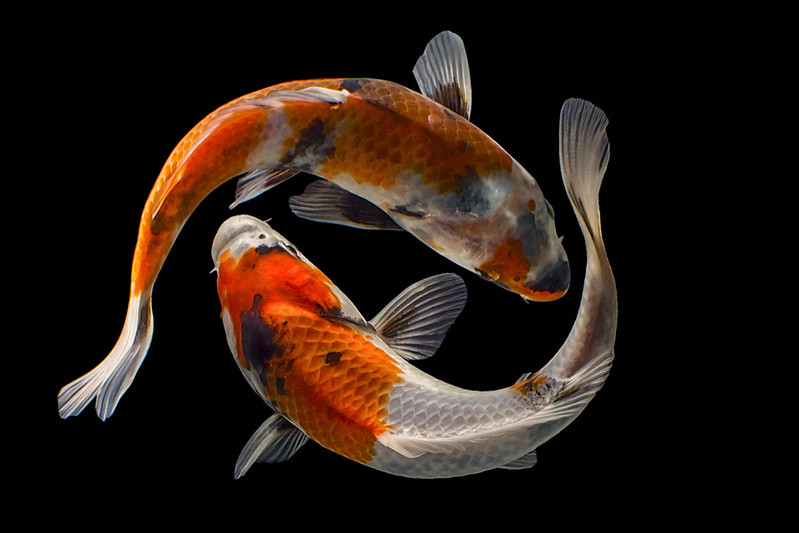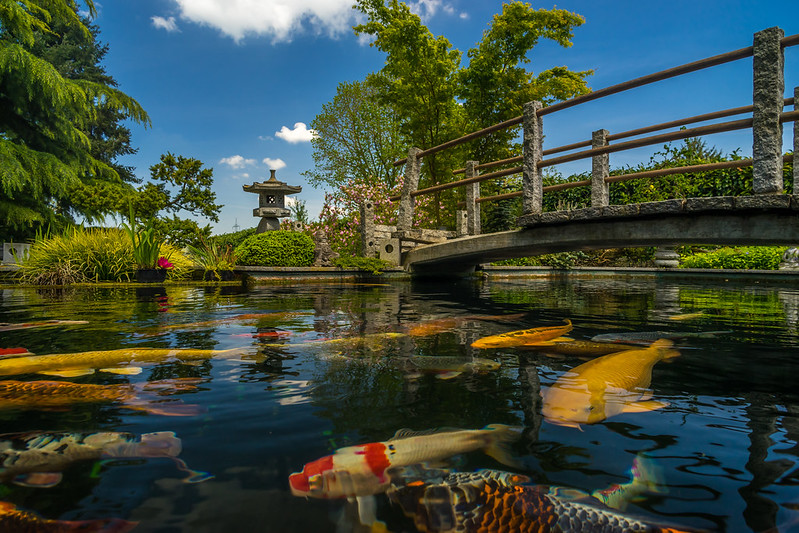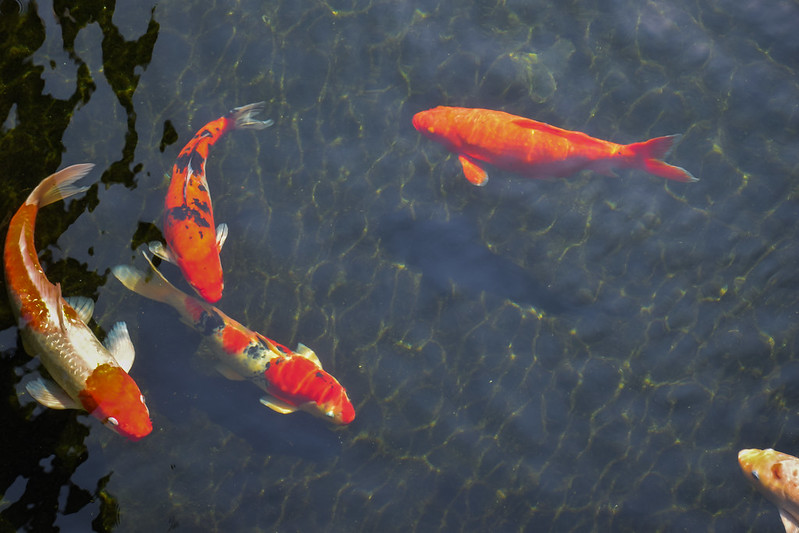
The Many Facets of Japanese Koi
Koi, specifically nishikigoi (錦鯉), literally means “brocaded carp.” For fish hobbyists, they have become one of the most expensive fish to own. Japanese koi are mainly kept for their beauty and enhance the decorative aspects of most gardens and homes.
For the Japanese, these fish symbolize love and friendship, since the word “koi” is a homophone for another word that means “love” or “affection.”
Several varieties of koi are distinguished by their patterns, color, and scales. The most popular koi category is Gosanke, which is comprised of three varieties: the Kohaku (red and white koi), Showa Sanshoku (red markings on white patterns on a black background), and Taisho Sanshoku (Kohaku with black markings).
Carp, which include the koi, were originally domesticated in East Asia and used as food fish. Their hardiness to adapt to different water conditions and climates enabled them to flourish in many countries and later became an easy favorite among fish lovers around the world.
In the 1820s, initially in Ojiya town, Niigata prefecture, Japan, the common carp was developed further to create a variety of color markings. Many varieties of color patterns were established by the 20th century but the rest of the world was only made aware of this wondrous development in 1914, when the Niigata Koi were exhibited in a Tokyo exposition. Soon after, the popularity of these beautiful fish spread all over the world.
Koi are usually identified by their color patterns, markings, and scale variations. Some common examples of popular types of Japanese Koi are:
Kohaku – “red and white” in Japanese, which are their colors.
Asagi – “pale blue” in Japanese. They are pale blue with red-orange bellies. The scales on their backs look like net patterns.
Ogon – literally means “gold”. This variety of koi is usually gold or orange and distinctly metallic but some are cream in color.
Bekko – means “tortoise shell.” This variety is usually red, yellow, or white with black markings.
Utsuri – “to print” in Japanese. Their general markings resemble ink stains that are red, yellow, or white.
Karasugoi – black koi with orange bellies.


